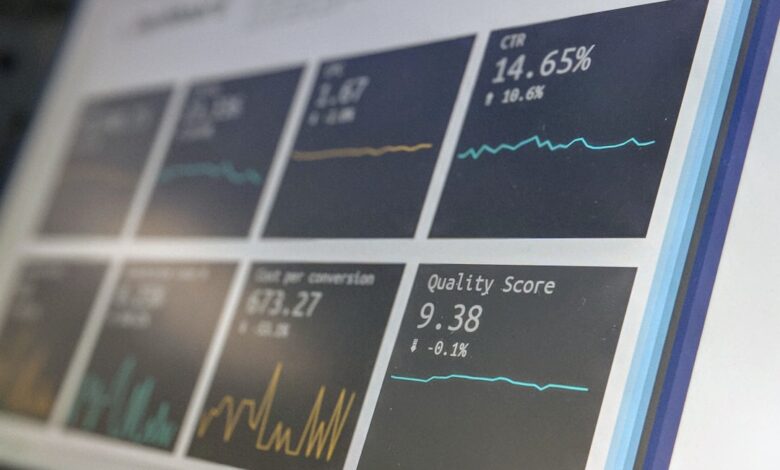Essential Guide to Day Trading: Strategies, Analysis, and Mindset for Beginners

In today's fast-paced financial landscape, day trading has emerged as an enticing avenue for individuals seeking to capitalize on short-term market movements. While the prospect of quick profits can be appealing, especially for beginners, it is essential to approach day trading with a solid foundation and a well-rounded strategy. This article serves as a comprehensive guide for novice traders, outlining key strategies and insights to help you get started effectively.
We will delve into the critical role of technical analysis in predicting market trends, equipping you with the tools to make informed trading decisions. Additionally, we will explore essential risk management techniques designed to minimize potential losses, ensuring that you can navigate the inherent volatility of the market with confidence. The psychology of trading is another vital aspect we will examine, as understanding your emotions can significantly influence your decision-making process.
With the rise of technology, algorithmic trading is transforming the way trades are executed, introducing new opportunities and challenges. We will also touch on swing trading strategies for capturing short-term trends, the impact of news and events on intraday trading, and the tools and platforms that can enhance your trading experience. Join us as we embark on this journey to demystify day trading and empower you with the knowledge needed to thrive in the dynamic world of online trading.
- 1. **Foundations of Day Trading: Key Strategies for Beginners**
- 2. **Navigating the Market: Technical Analysis and Its Role in Trading Success**
- 3. **Mastering the Mind: The Psychology of Trading and Risk Management Techniques**
1. **Foundations of Day Trading: Key Strategies for Beginners**
Day trading can be an exciting yet challenging endeavor for beginners, requiring a solid foundation of strategies to navigate the fast-paced market. One of the primary strategies is **scalping**, which involves making numerous trades throughout the day to exploit small price movements. This technique requires quick decision-making and execution, as traders aim to capture tiny gains that accumulate over time.
Another foundational strategy is **momentum trading**, where traders focus on stocks that are moving significantly in one direction on high volume. By identifying stocks that are trending, beginners can enter trades that are likely to continue in the same direction, maximizing potential profits. It’s essential for traders to stay updated on market news and trends to effectively use this strategy.
**Range trading** is also a popular approach among beginners. This strategy involves identifying price levels at which a stock tends to bounce back—support and resistance levels. Traders buy near support and sell near resistance, capitalizing on the predictable price movements within a defined range.
Additionally, **news trading** can be a valuable strategy, where traders react to news releases and other events that can cause volatility in stock prices. Understanding how to interpret economic indicators and corporate announcements can help traders position themselves advantageously.
Finally, beginners should consider employing **technical analysis** tools, such as charts, indicators, and patterns, to inform their trading decisions. By analyzing historical price movements, traders can identify potential entry and exit points, enhancing their chances of success.
In summary, a successful day trading strategy for beginners often involves a combination of scalping, momentum trading, range trading, news trading, and technical analysis. By mastering these foundational strategies, new traders can build confidence and improve their ability to navigate the complexities of day trading.
2. **Navigating the Market: Technical Analysis and Its Role in Trading Success**
Technical analysis plays a crucial role in navigating the financial markets, serving as a foundational tool for traders seeking to make informed decisions. By examining historical price data and trading volumes, traders can identify patterns and trends that may indicate future price movements. This approach relies on the belief that market sentiment and behavior are reflected in price charts, allowing traders to forecast potential outcomes based on past performance.
One of the key components of technical analysis is the use of various indicators and chart patterns, such as moving averages, Relative Strength Index (RSI), and candlestick formations. These tools help traders assess market trends, momentum, and potential reversal points. For instance, moving averages can smooth out price fluctuations, providing a clearer picture of the underlying trend, while RSI can indicate whether a market is overbought or oversold.
Moreover, technical analysis aids in setting entry and exit points for trades. By identifying support and resistance levels—price points where an asset tends to stop and reverse—traders can make strategic decisions about when to enter or exit a position. This level of insight is particularly valuable in volatile markets, where rapid price changes can lead to significant gains or losses.
While technical analysis is a powerful tool, it is essential for beginners to supplement their analysis with a solid understanding of market fundamentals and broader economic indicators. Combining technical analysis with fundamental analysis can enhance decision-making and provide a more comprehensive view of market dynamics.
Ultimately, mastering technical analysis can empower traders to navigate the complexities of the market with greater confidence, making it a vital skill for those looking to achieve success in day trading. As they gain experience, traders can refine their strategies, adapting their technical analysis techniques to align with their trading style and risk tolerance.
3. **Mastering the Mind: The Psychology of Trading and Risk Management Techniques**
Successful trading is not just about strategies and market analysis; it also heavily relies on mastering the psychological aspects of trading. Traders often face emotional challenges that can significantly impact their decision-making processes. Fear and greed are two dominant emotions that can lead to impulsive actions, such as overtrading or holding onto losing positions longer than necessary. Understanding these psychological factors is crucial for maintaining discipline and making informed decisions.
To mitigate the effects of emotions, traders can implement several risk management techniques. First, setting a clear trading plan with defined entry and exit points can help maintain focus and reduce emotional reactions. This plan should include stop-loss orders to limit potential losses, ensuring that traders do not deviate from their intended strategy when faced with market volatility.
Additionally, position sizing is a key risk management technique. By determining the appropriate amount of capital to allocate to each trade based on overall account size and risk tolerance, traders can avoid risking too much on a single position. This approach not only protects their capital but also helps maintain emotional stability during trades.
Moreover, regular self-assessment and journaling can assist traders in recognizing emotional patterns and improving their decision-making over time. By reflecting on past trades and identifying triggers for emotional responses, traders can develop strategies to counteract these impulses, leading to more rational and effective trading behavior. Ultimately, mastering the psychological aspects of trading, combined with sound risk management techniques, is essential for long-term success in the markets.
In conclusion, embarking on a day trading journey requires a solid understanding of various strategies and market dynamics. For beginners, mastering the foundational strategies is crucial to navigating the complexities of the market effectively. Technical analysis serves as an essential tool, enabling traders to predict market movements and make informed decisions. However, beyond the charts and indicators, the psychological aspect of trading cannot be overlooked; managing emotions and maintaining discipline are vital for long-term success.
Risk management techniques play a pivotal role in minimizing potential losses, ensuring that traders can withstand the volatility inherent in day trading. Moreover, as technology evolves, algorithmic trading is reshaping the landscape, offering new opportunities for efficiency and precision. Swing trading strategies also provide an alternative approach, allowing traders to capture short-term trends without the pressures of rapid-fire trading.
Finally, staying informed about news and events is indispensable, as these factors can significantly impact intraday trading outcomes. By leveraging the right tools and platforms, traders can enhance their skills and increase their chances of success. With a commitment to continuous learning and adaptation, beginners can navigate the day trading world with confidence, setting the stage for a rewarding trading experience.





